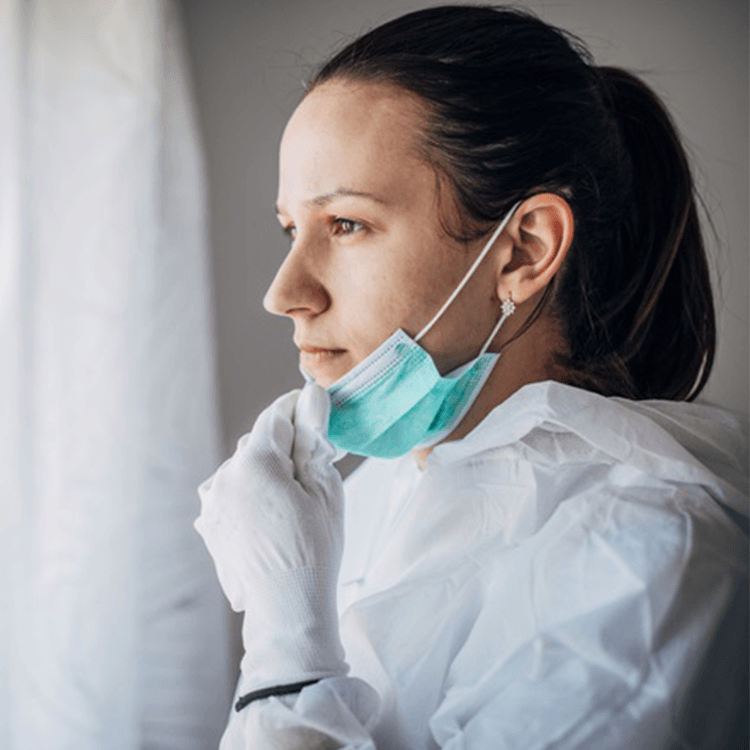Resources for Protecting You:
During these unprecedented times, the eight organizational members of this alliance are committed to providing education and community building that fosters your personal safety. Remember, we are here for you.
Centers for Disease Control and Prevention (CDC)
– Infection Prevention for Healthcare Workers
– How to Prepare and Take Action for COVID-19 in Healthcare Settings
– Information for Healthcare Professionals
– Travel Information
– Information for Laboratories
– FAQs About Personal Protective Equipment
– Communication Resources
– Under Crisis Capacity Strategies
– Sign up for the CDC newsletter to receive weekly emails about the coronavirus disease 2019 (COVID-19) outbreak.
– Use Personal Protective Equipment when caring for Patients with Confirmed or Suspected COVID
World Health Organization (WHO)
– Q&A on Coronaviruses
USA.gov
– Information about what the U.S. Government is doing in response to COVID-19.
Johns Hopkins University
– COVID-19 Global Case Tracker
NIEHS Worker Training Program (WTP)
– Health and safety resources for workers who may be at risk of exposure to COVID-19.
American Society of Echocardiography
– ASE Statement on Protection of Patients and Echocardiography Service Providers During the COVID-19 Outbreak
– Specific Considerations for Sonographers When Performing Echocardiograms During the 2019 Novel Coronavirus Outbreak
– Specific Considerations for Pediatric, Fetal, and Congenital Heart Disease Patients and Echocardiography Service Providers During the 2019 Novel Coronavirus Outbreak
– Specific Considerations for the Protection of Patients and Echocardiography Service Providers When Performing Perioperative or Periprocedural Transesophageal Echocardiography During the 2019 Novel Coronavirus Outbreak
– ASE Statement on Point-of-Care Ultrasound (POCUS) During the 2019 Novel Coronavirus Pandemic
– ASE COVID-19 Resources
American Society of Nuclear Cardiology
– Guidance and Best Practices for Nuclear Cardiology Laboratories during the Coronavirus Disease 2019 (COVID-19) Pandemic: An Information Statement from ASNC and SNMMI
– Mo-99 Supply Update: Shortages Possible in Some Areas
International Society of Ultrasound in Obstetrics and Gynecology
– ISUOG COVID-19 Resources
Webinars
– COVID-19 Preparedness for Echo Labs: Insights from the Frontlines (ASE)
– COVID-19 Pandemic: Your Questions Answered (ASE)
– Pediatric, Fetal, and Congenital Heart Disease Statement on COVID-19
– ASE Recommendations for Echo Labs Participating in Cardiac POCUS and Critical Care Echo Training – How Does POCUS Play a Role in the COVID-19 Pandemic (ASE)
– COVID-19 Preparedness for Nuclear Cardiology Labs: Insights from the US, China and Singapore (ASNC)
– International Webinar on Ultrasound Applications for the COVID-19 Pandemics
– AIUM Webinar: COVID-19 Transducer Cleaning and Personal Protective Equipment
– Guidelines for the Safe Operation of Vascular Labs (SVU – SVS)
Letters to Assist You in Advocating for PPEs and Practice Changes
The Alliance stands with the Registrant and sonography community in calling for PPEs and limiting elective sonography studies. To help you advocate for immediate change at your practice setting, please download and share the following letters with your employer, healthcare administrators and others.
– AIUM Letter
– ARDMS Letter
– SDMS Letter
– Other Healthcare Organizations (have been sent to government officials, regulatory bodies and the medical community)
Featured Articles
– WHO: Rights, Roles & Responsibilities of Health Workers, Including Key Considerations for Occupational Safety
– Infection Control – Fundamentals
– Strategies to Optimize the Supply of PPE and Equipment
– 73 hospital leaders in 10 states hit hardest by COVID-19 offer advice to colleagues: If you do nothing else, do this
– In Pursuit of PPE
– Pushing on all cylinders to keep our health care workforce safe (AHA)
– Radiology department strategies to protect radiologic technologists against COVID19: Experience from Wuhan
The above are only a few of the resources that we utilize to monitor the ongoing situation. Reduce your chances of being infected and/or spreading COVID-19 by taking these simple precautions as outlined by the CDC:
- Wash your hands often with soap and water for at least 20 seconds, especially after going the bathroom; before eating; and blowing your nose, coughing, or sneezing. If soap and water are not readily available, use a hand sanitizer that contains at least 60% alcohol.
- Always wash your hands with soap and water if your hands are visibly dirty.
- Stay home when you are sick, except to get medical care.
- Avoid close contact with people who are sick.
- Cover your coughs and sneezes with a tissue or bent elbow and dispose of the tissue immediately.
- Maintain at least 1-meter (3 feet) distance between yourself and anyone who is coughing or sneezing.
- Clean frequently touched surfaces and objects daily (e.g., tables, countertops, light switches, doorknobs, and cabinet handles) using a regular household detergent and water.
- Only use a mask if you have symptoms of COVID-19. Masks do not help against becoming infected, only against the spreading of the disease, and should be saved for patients who have been infected and the health care providers treating them.
| <- Back |
This webpage is powered by ARDMS.
